If you buy through our links, we may earn an affiliate commission. This supports our mission to get more people active and outside.Learn about Outside Online's affiliate link policy
Ironman Coeur d'Alene Gear and Nutrition Test: The Good, The Bad, and The Mistakes You Shouldn't Make
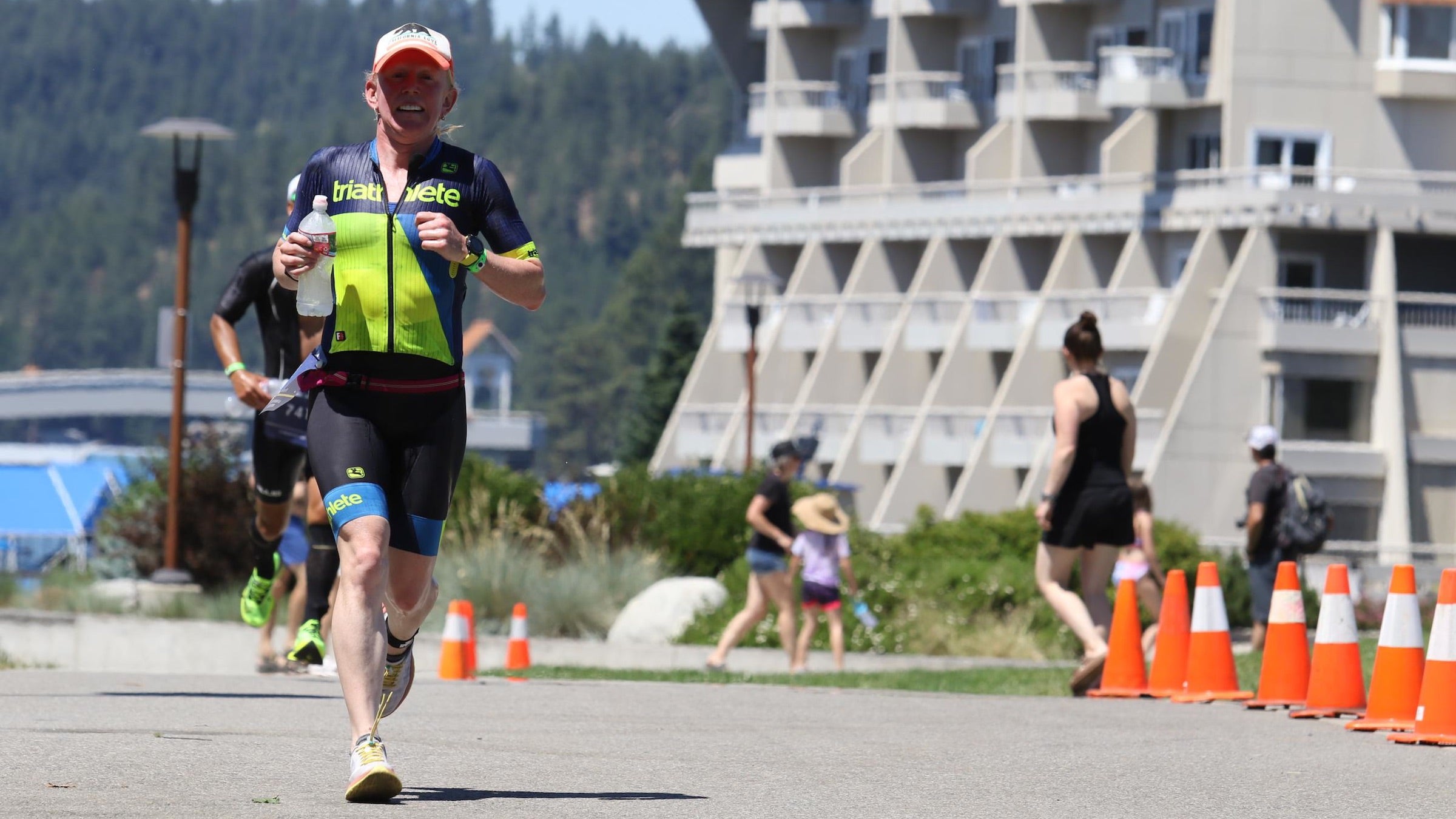
We tested all the hot and trusty Ironman gear at IM CDA. (Photo: FinisherPix)
Before my first Ironman, seven years ago, I was very confused and overwhelmed. There was just so much stuff involved. What was I supposed to do with all these gear bags? How much stuff do you really need? How exactly do you eat for that many hours while triathlon-ing?
Sitting at the athlete briefing in Whistler, Canada, I asked the guy next to me: What exactly goes in a special needs bag anyway? And he said, in a very French accent, “I always put some fried chicken and a joint in mine.” Apparently, it gave him something to look forward to.
Fortunately (or unfortunately), I did not take his advice.
Since then, I’ve raced a few more Ironmans—and they never get any less logistically complicated, though they do get a little less confusing. I raced pro and then took this job, as editor-in-chief. Our staff has raced all over the world, and we’ve gotten to test some of the newest and best (and oldest) gear. So I’m here now to save you from the overwhelming-ness that is Ironman.
Any full iron-distance race is a production: a lot of gear, a lot of logistics, a lot of patience (and help) from friends and family. An iron-distance in 100+ degrees is a monumental production, with a whole other level of planning and patience—and, ideally, a little luck too. As they say: It’s not a question of if something goes wrong, but if you can deal with it when it does.
For Ironman Coeur d’Alene last weekend, where it was very very hot, I tested a variety of gear and training and my ability to troubleshoot. Some of it went OK on a brutal day, and some of it didn’t. If you’re prepping for a hot Ironman, a hilly Ironman, or really, just any Ironman, hopefully this will help guide you on what worked and what definitely did not work.
For reference, I’m very small (in terms of gear), very pale (in terms of heat stroke), and I trained about 15-17 hours/week (not the worst, not the best). Here’s what I used for gear and nutrition, what went well, and what I’d do differently.
RELATED: How to Pack Your Ironman Bags: A Complete Checklist
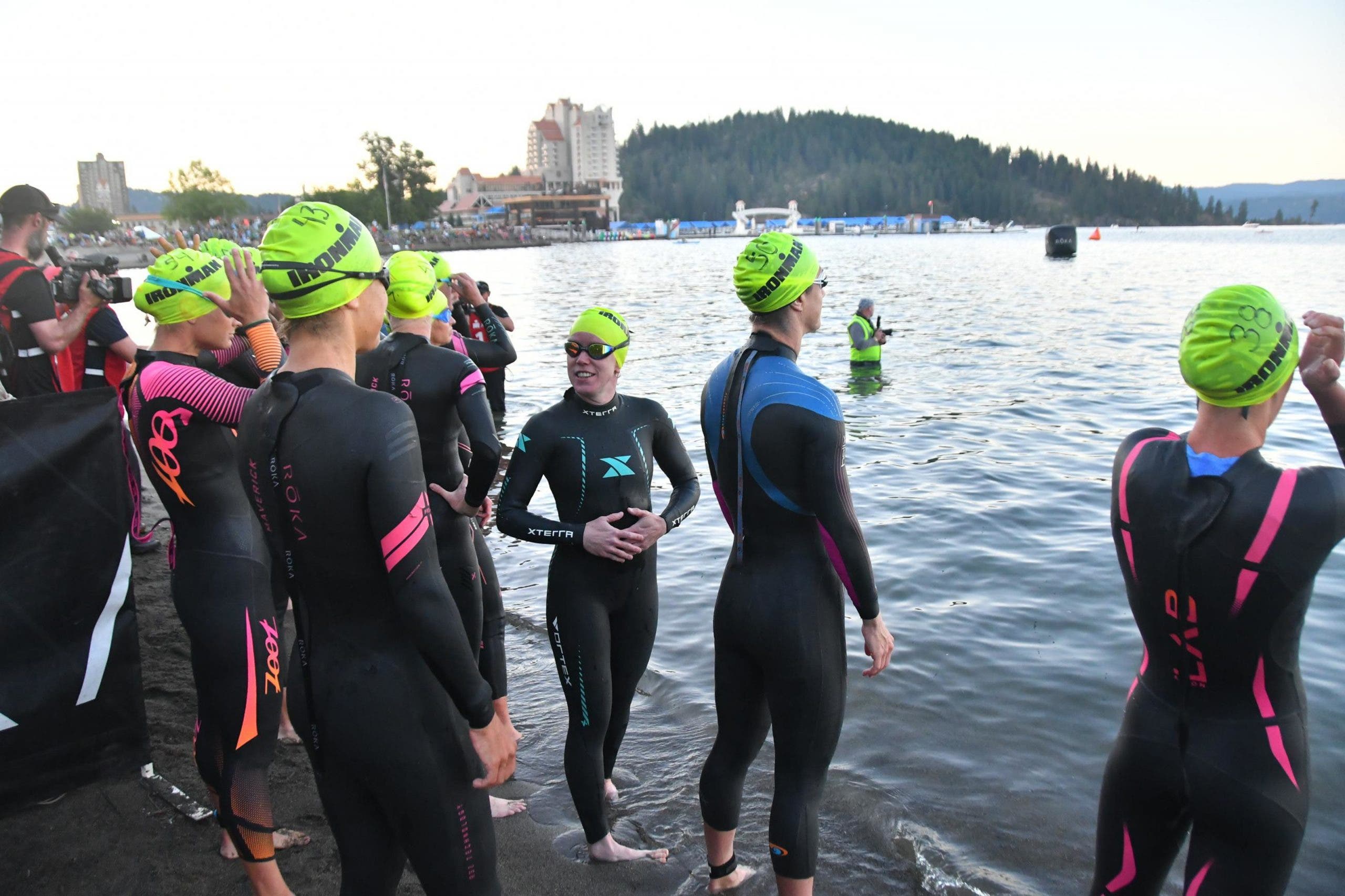
Reminder: Outside+ members get one FREE FinisherPix package per year. Claim your photo package by clicking on your profile in the upper right corner, selecting “My Perks,” and scrolling down to “Discounts.” Not an Outside+ member? Become one today!
Clothing and gear
Swim
Xterra women’s Vortex: Yeah, there are fancier wetsuits out there. I’ve tried them. I didn’t love them. Wetsuits might be one of those things that are really individual and, for me, this is the right combo of flexible and buoyant. Plus, it was the only thing that didn’t chafe all day. The only downside: The water temperature was around 67-68 degrees, on an already hot day, and I was definitely toasty by the second lap. If I knew what was in store, I might have gone sleeveless.
Roka R1 goggles: My husband convinced me to try these and they’re, by my money, the best open water goggles on the market. I went with the dark amber mirror and struggled at just one point: when my group rounded the buoy, looked straight into the sun, and couldn’t figure out where to go. The goggles did fog up slightly and get water in them after I got hit in the face (but they didn’t come off!), and I had to adjust as I ran around the beach for the second lap.
Body glide: Always—only on the neck.
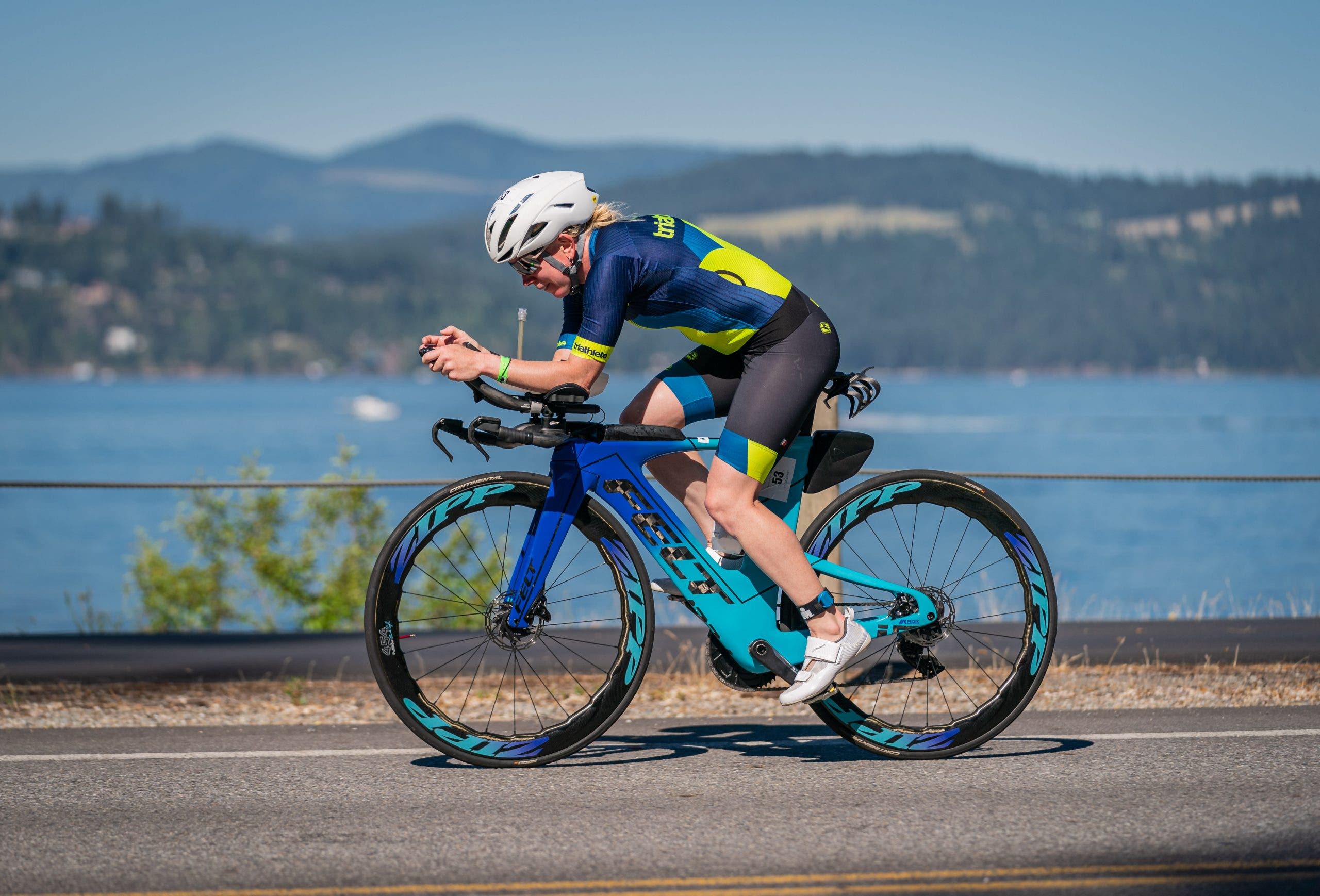
Bike
Felt IA FRD: Weird story: I have Mirinda Carfrae’s old bike. As a small rider (5’2″) there just aren’t many frames out there I can comfortably fit and handle, and Felt makes one of the few. Arguably, even this is a tiny bit too big for me, but any smaller and I’d have to go with 650 wheels again, which I don’t want to do. If you’re small too, the IA FRD is a nice option—but, yes, it’s also a lot of bike and a lot nicer of a bike than most of us need. If I was picking from scratch and money was an object, I might go with the 48cm Cervelo P5 instead.
Zipp 454 NSW wheels: Because of my size and mediocre handling skills, I don’t do great with very deep wheels. The shape of these provides a nice balance—you get most of the aero benefit without the terrible crosswind sail effect. Only complaint: I don’t love that the thru-axles require an allen key to get the wheels off.
SRAM Red eTap (1x with 48T chainring in front and 10-33 cassette in back): Like I said, it’s a nicer bike than most of us need. The super fancy Red eTap is great, IMO—and I’ve had almost no problems with it (compared to the Di2 synchro shift). As long as I remember to keep it charged. The 1x, on the other hand, is….interesting. Yes, it’s amazing what they can do with gearing these days—but I probably could have used a few more of those gears on the Coeur d’Alene course. For reference, I rode this bike with a 10-28 cassette at St. George and struggled with a leg-wrecking 40rpm cadence up some of the hills. I swapped in the 10-33 cassette, then, because that’s all that was in stock in the era of bike parts shortages. While I appreciated the 33 as I imploded on the hill back into town, you probably don’t really need it; there’s nothing that steep on the CDA course. I did, however, find myself regularly lacking an extra gear for descending and a few more gears in between. If you’re targeting the full or 70.3 in Coeur d’Alene, you might go with a bigger ring in the front and then a 10-30 or so in the back. Or don’t ride a 1x.
Continental Grand Prix 5000s (with Vittoria latex tubes): These tires are a good combo of flat protection (when a lot of racers were flatting) and speed. And yes, I made my race sherpa put latex tubes in for faster rolling resistance. I’m sure it made all the difference.
Xlab Torpedo Versa 500: Front-end hydration systems are so so so specific to your bars and your bike. While I prefer the systems that don’t use velcro, this standard Xlab one is simple, fits my bars, and if I clamp it on just right it doesn’t rattle. Plus, if I get the straw angled correctly, then it smacks me in the face and reminds me to drink water. Unfortunately, if I don’t get the straw cut and angled correctly, then it makes it very challenging to drink out of. Tiny things make a big difference in Ironman.
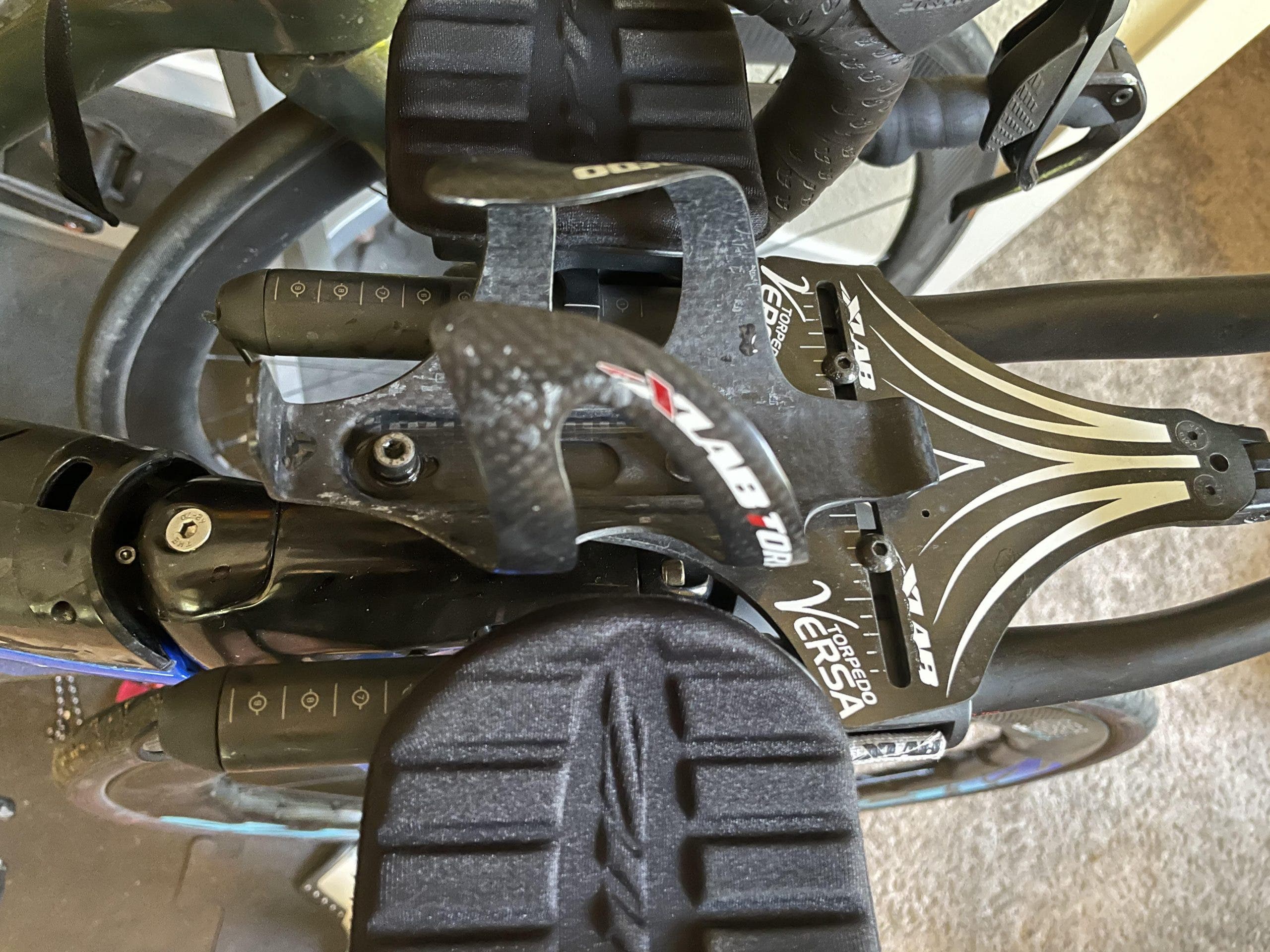
Wahoo ELEMNT ROAM: I like the size and how many fields I can put on a screen, and that I can program it to recognize my devices immediately. I’m a simple person.
Shimano TR5W cycling shoes: Not the best, not the worst. I find them to be a little inflexible in the upper and they definitely retain water (and water smell), but they’re fine standard triathlon shoes.
Specialized Evade helmet: Zero percent chance I was going to wear an unventilated aero helmet. This one is plenty cool and gives you some aero benefit. Plus, it has this fancy magnetic buckle for quick transitions—which I only had to practice a dozen times before I could reliably get right.
Smith Pivlock Arena ChromaPop sunglasses: I’m not even sure they make these anymore, but they are the only glasses I can see over the top of when in aero position.
Just for reference: In my flat kit box (which is built onto the Felt and which rattles constantly because I could never get the screw tightened all the way) I carried a CO2 cartridge and inflator, one spare tube, two tire irons, and an allen wrench to get the wheels off.
Run
Hoka Carbon X: I almost ran in the new Asics Metaspeed Sky. They are fast. They are also, however, about a half-size small. An 11-mile tempo run in training nearly killed my feet. Factor in that I was dealing with a calf injury and I wanted to prioritize comfort. And so I was left with my trusty Hoka Carbon Xs; I refused to even buy a new pair because I didn’t want to be forced to upgrade to the Carbon X 2. Nothing new on race day. And, anyway, whatever fast shoes you wear you still have to actually, you know, run fast for them to work.

Garmin Fenix 5s: I like this watch. It does what I want it to do. Except find satellites for the first 1.5 miles.
Giordana FRC Pro Tri Doppio Suit: When we got custom Triathlete cycling and tri kits, I spared no expense. This is, by far, a top-end super wicking, super aero tri kit. It looks awesome and feels awesome. It is also, however, tight. Very tight. I have the cycling kit too and it is what is generously referred to as a “European cut,” but the tri suit takes that to a next level. This is a family publication, so I can’t even begin to describe the chafing down there, but let me just say: Do yourself a favor and size up. Your nether regions will appreciate it.
Adidas heart rate monitoring smart bra: You know those problems that are very specific to you and probably five other people. The lack of sports bras with built-in heart rate monitors is one of mine. I (and many many women) can’t wear heart rate straps while running. I have scars that attest to the chafing. There was briefly a period where some companies made sports bras that allowed you to clip in the heart rate monitor piece (whether Garmin or Wahoo or something else) to the bra itself. This is one of those. But the market moment passed and they’re very very hard to find anymore—which is annoying, because this is not the most comfortable or cutest sports bra by any stretch of the imagination, but with the temps I wanted to keep an eye on my heart rate and not bury myself too early. Not sure it helped in the long run, but it definitely works.

Ironman race belt: Bought this once at a merch tent at a race and it is the perfect race belt. It fits four gels in little loops and it has a small pocket for two more gels or whatever else you want to put in, yet it somehow isn’t so big that it feels like wearing a fanny pack.
Nutrition
Infinit: I used a custom-blend Infinit drink mix with slightly more sodium. It’s 260 calories/serving, with 65g of carbs, 384mg of sodium, and 114mg of potassium—primarily a maltodextrin and dextrose mix. I go through two bottles during the bike, each with about 800 calories. I keep my front aero bottle as exclusively water and refill on the fly. I also froze my second bottle and it melted by halfway (which was the smartest choice I made all day). Lots of people have trouble eating calories in races; and drinking my calories—with an appropriate amount of additional water as well—typically works fine in normal temperatures. In the heat, though, it backfired. By the last 30 miles of the bike it had become clear I needed more water. My head hurt, I was getting chills, and I was struggling to keep things down.
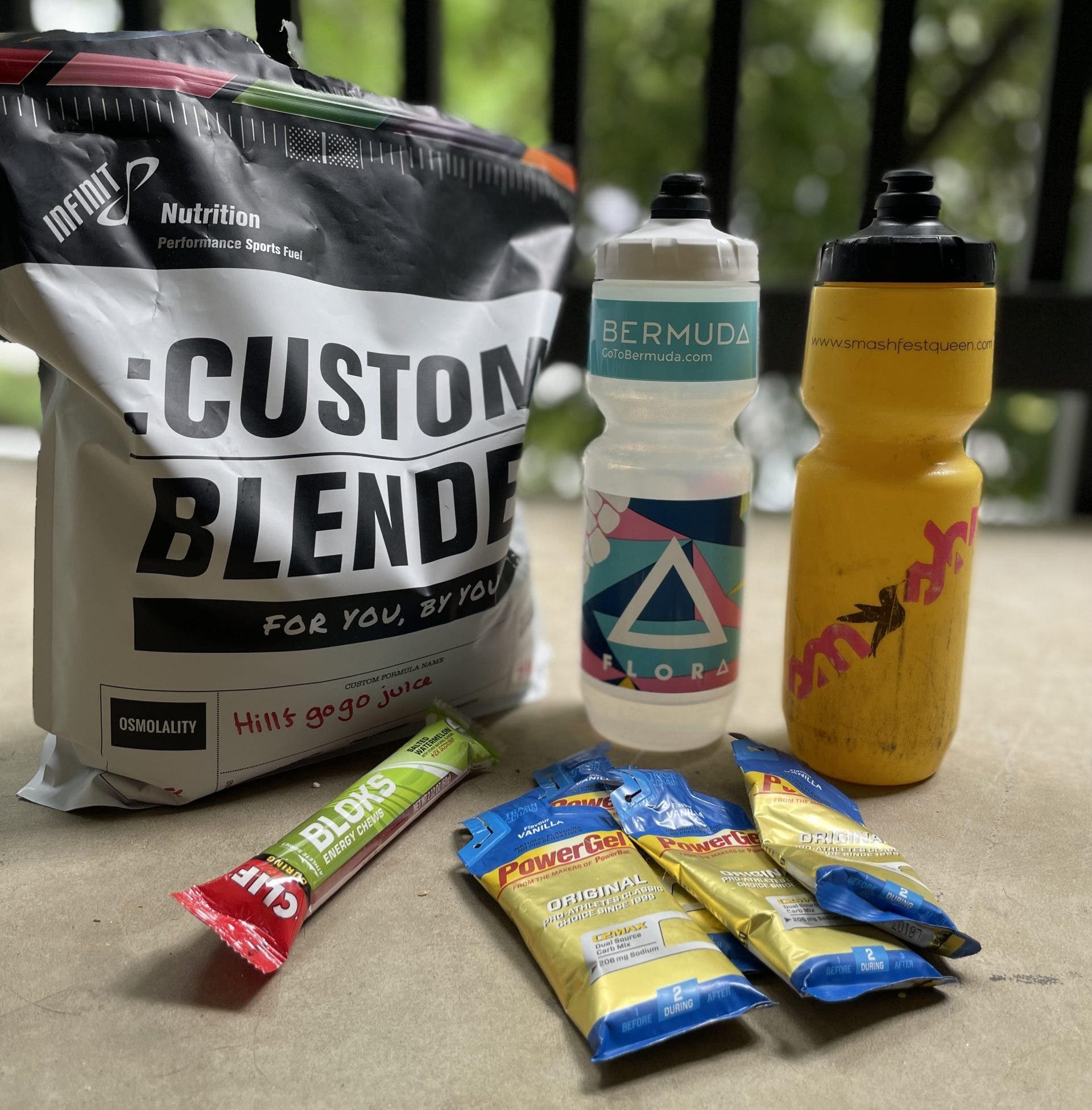
Clif salted watermelon shot blocks: Once I started to struggle, I switched to the back-up shot blocks in my bento box and water, lots of water. It hit the spot exactly and I should have started with this earlier.
Water: I think I had about four bottles of 24oz each—but it’s hard to tell exactly because I grab as I go through aid station. I should have had more pure water and I should have had it earlier on the bike.
Powerbar vanilla gels: On the run, I took three or four of these gels. The consistency on these makes them much easier to get down than many of the thicker gels out there. Normally I’d have taken more in, but with the early onset heatstroke my main concern was staying cool and hydrating. Ice and water: yes. Calories and sodium: not so much.
Coke + Otter pops + grapes: Things that hit the spot as the day went on. It’s hard to drink a lot in the heat without throwing up, but all you want to do is drink a lot. Chewing on ice and Otter pops as I shuffled was perfect.
Special needs bags: In COVID times, you have to stop to get your bag, so I didn’t use one on the bike (since I didn’t want to get off and wade through the mess). On the run, I threw back-up supplies in my bag just in case—extra gels, a frozen water bottle that was hot water by the time I got it, and an extra ibuprofen or Immodium if I needed it.
RELATED: Hot Stuff: The History and Science of Heat Acclimation
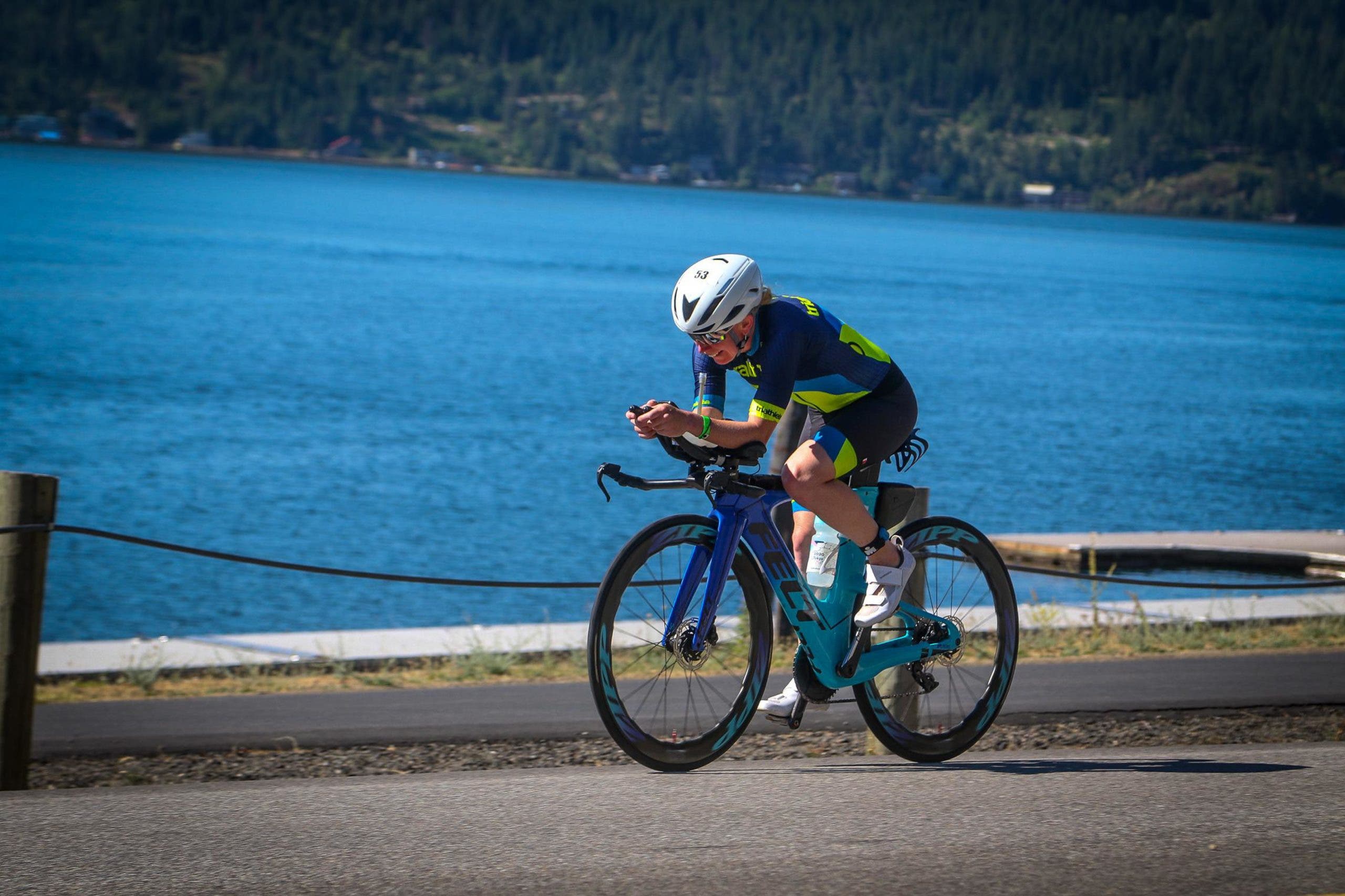
Things I’d do differently next time
ie. be ye not so stupid
For a long hot day, I didn’t make any huge mistakes with my gear or nutrition (I think), but I made a few small ones that compounded and definitely put me in the heatstroke-y locker a little earlier than is ideal. While I eventually rallied and finished, it’s hard to come back from burying yourself too soon on a long hot day like that.
Gearing: The 1x gearing wasn’t why I imploded on the bike, but if I was doing things differently I’d choose different gears.
Pedals: I switched to SPD pedals on my TT bike earlier this year. I’ll probably switch back to the Look Keo. I tend to twist my right foot weird and without enough float I end up pushing against the limit. It caused knee pain later. Again, not why I ran slower than I wanted, but it didn’t help.
Running shoes: If run speed was really going to be an issue, I’d go with the Asics Metaspeed Sky (if I got to practice more in the right size). Supershoes are dependent on your run form and a ton of other things, but I think these may be the fastest shoes commercially right now.
Tri kit: Really really should have raced in the size up.
Water & bottles: Most mistakes you make in a hot Ironman are nutrition mistakes. I should have drank more water sooner. But there were two gear mistakes that contributed to this. 1. The straw in my front Torpedo aero bottle wasn’t exactly right. It was fine, but I should have gotten a new straw and cut it to the exact right length and practiced more beforehand. It would have helped with getting more water down sooner. 2. I stuck a Gorilla cage on the back of my seat when I realized I would want an extra bottle on my bike, but once on course I couldn’t get the plastic water bottles from the aid stations to fit into that cage while I was going. (See the picture above, see how there’s no bottle on the back. That’s because I’m stupid.) This also was only a small mistake—I troubleshooted by filling the front bottle on the fly as I went—but as the aid stations got swarmed on the second lap of the bike it would have helped to be carrying more water with me.
Sunscreen: One of the smaller pieces of gear many of us don’t pay attention to, but that can be day-changing. I use Coppertone Sport SPF 50 because it isn’t heavy and it doesn’t run. And it’s always held up in brutal conditions. But, if you’re very pale or very prone to heatstroke like me, then you should definitely practice putting on multiple layers, putting it on before you put on your wetsuit (so it doesn’t all get rubbed off), and reapplying. Getting fried too early caused me a lot of problems.
Immodium: Yes, it’s an anti-diarrhea drug, but it has saved many a GI-distressed race for me. I always stick it in my special needs bag and in my bento box for back-up. However, it can also dehydrate you. I should not have popped two right before the start, but should have waited if I really needed it.
And one thing I really should do differently next time—though it’s not about gear or nutrition: Don’t start walking. Once you tell yourself, “I’ll only walk the aid stations,” it gets really hard to start running again after them. The reality is that even if you’re shuffling in a run-like motion it’s still faster than walking and you don’t waste energy on the mental gymnastics. One of my coaches once told me, “Do not stop running for any reason,” and I’ve finally realized how good that advice was. Just keep running.